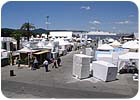
The 2006 edition of CarraraMarmotec took place from May 31 to June 3 in Carrara, Italy.
Walking through the fairgrounds at CarraraMarmotec, which took place from May 31 to June 3 in Carrara, Italy, one of the more noticeable changes was the addition of new indoor exhibition space. And to christen the new space, some of the region's most noteworthy stone producers brought out their very best stone displays. But more importantly, the event seemed to draw stronger attendance than it had in recent years - perhaps due to a national holiday in Italy, which allowed more people to visit the fairgrounds.
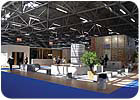
One of the more noticeable changes was the addition of new indoor exhibition space.
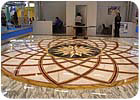
To christen the new exhibition space, some of the region's most noteworthy stone producers brought out their very best stone displays.
A total of 54% of the Italian operators came from Central Italy, 32% from Northern Italy and 14% from the South and the islands. Of course, visitors also had the opportunity to visit the many stoneworking companies in the region - which not only work Carrara's famed white marble, but a broad range of granite, marble, travertine and other materials from around the world. In fact, many of the region's leading stoneworking plants have become specialized in exotic materials such as onyx, and they are working with technology for fragile materials so they can stand apart from increased international competition.
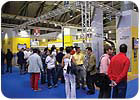
The event seemed to draw stronger attendance than it had in recent years - perhaps due to a national holiday in Italy, which allowed more people to visit the fairgrounds.
CarraraMarmotec reported that the rise in attendance was also helped by a worldwide marketing effort of advertising, promotion at international trade fairs and direct mail/e-mail. Some categories have been specifically targeted by e-mail, including 10,000 architects and 15,000 building contractors and operators.
“[Overall, it was] a positive fair which also brought to the fore some interesting factors that will help us plan the next fair,†said Paris Mazzanti, managing director of CarraraFiere. “[There was] widespread presence of blocks and raw materials in the outdoor areas, and powerful promotion of finished products in the inside halls. The meetings saw attendance of people who were extremely interested in the initiatives, such as Mario Botta's lecture about marble and stone in a new Renaissance. This [showcases] our fair as a great cultural tool - a sort of bridge between the manufacturing world and the world of people who design and use natural stone. We will work to create new opportunities and stimuli, especially for the architects, who seemed to be extremely interested in the fair and in the displayed materials.â€
The next edition of Carrara-Marmotec will take place from May 30 to June 2, 2007.
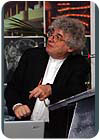
World-renowned Swiss architect Mario Botta was among the speakers at the latest edition of CarraraMarmotec in Carrara, Italy.
Sidebar: Renowned architect Mario Botta speaks in Carrara
World-renowned Swiss architect Mario Botta was among the speakers at the latest edition of CarraraMarmotec in Carrara, Italy. His presentation, “Marble and stone in an new Renaissance,†was extremely well received by an audience of architects, designers and businessmen.“These big marble blocks arouse in every architect powerful feelings, the attraction to use it for a presence that will continue over time,†said Botta, who has made extensive use of stone in his work around the world. “Stone is an essential material to give a new lease of life to a city. Carrara itself could become an illustrious example of the Renaissance of a local cultural fabric. One should only fit some new buildings in the old city plan; to make the most of the modern, skillful way of using stone. But culturally, a new Renaissance relying on stone can only refer back to the man of Renaissance, to the brains that knew how to master every step of the process, from the design to the development.â€
Botta stressed that there needs to be a collaboration between all parties in the creative process of building stone architecture. “We must therefore find again that unity of knowledge, which has now been replaced by specialization - the separation between the disciplines, which is also a sort of vertical separation,†he said. “Otherwise, we risk building a poorer, more miserable architecture. The risk is clear if one fails to understand the need that the architect and the artist work in mutual consultation again, as both are called to find common working methods in every building feature, whether it is a space or a material. When the architect offers quality, he proposes an interpretation that will certainly enrich the artist. And vice versa, of course.â€
After the conference, Botta participated in a passionate debate with the many professionals on hand at the event.